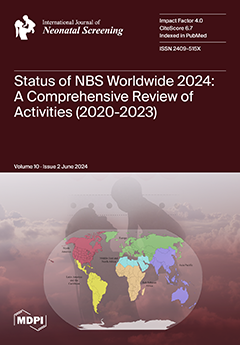Open AccessArticle
Defining the Minimal Long-Term Follow-Up Data Elements for Newborn Screening
by
Yvonne Kellar-Guenther, Lauren Barringer, Katherine Raboin, Ginger Nichols, Kathy Y. F. Chou, Kathy Nguyen, Amy R. Burke, Sandy Fawbush, Joyal B. Meyer, Morna Dorsey, Amy Brower, Kee Chan, Mei Lietsch, Jennifer Taylor, Michele Caggana and Marci K. Sontag
Cited by 3 | Viewed by 3062
Abstract
Newborn screening (NBS) is hailed as a public health success, but little is known about the long-term outcomes following a positive newborn screen. There has been difficulty gathering long-term follow-up (LTFU) data consistently, reliably, and with minimal effort. Six programs developed and tested
[...] Read more.
Newborn screening (NBS) is hailed as a public health success, but little is known about the long-term outcomes following a positive newborn screen. There has been difficulty gathering long-term follow-up (LTFU) data consistently, reliably, and with minimal effort. Six programs developed and tested a core set of minimal LTFU data elements. After an iterative data collection process and the development of a data collection tool, the group agreed on the minimal LTFU data elements. The denominator captured all infants with an NBS diagnosis, accounting for children who moved or died prior to the follow-up year. They also agreed on three LTFU outcomes: if the child was still alive, had contact with a specialist, and received appropriate care specific to their diagnosis within the year. The six programs representing NBS public health programs, clinical providers, and research programs provided data across multiple NBS disorders. In 2022, 83.8% (563/672) of the children identified by the LTFU programs were alive and living in the jurisdiction; of those, 92.0% (518/563) saw a specialist, and 87.7% (494/563) received appropriate care. The core LTFU data elements can be applied as a foundation to address the impact of early diagnosis by NBS within and across jurisdictions.
Full article
►▼
Show Figures






